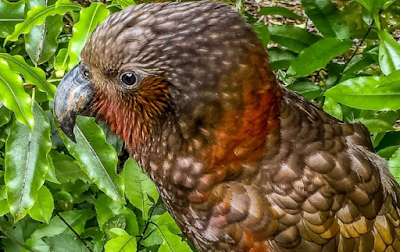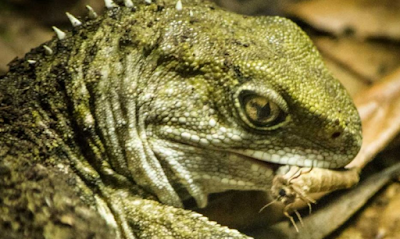Being the huge fan of our feathery friends that I am, one of my favourite places to visit is
Pukaha Mount Bruce, National Wildlife Centre, a wildlife sanctuary situated in the Tararua District, North Island, New Zealand. Oh Pukaha! How do I love thee, let me count the ways. I love thee to the depth, breadth and height of the 942-hectare, protected forest and wildlife gem that you are. There is so much to see and do at Pukaha, one visit definitely is not enough.
Pukaha Mount Bruce is dedicated to the protection and restoration of New Zealand native bush and wildlife, and in particular its endangered native birds, and is home to quite literally my favourite bird in the whole world, ‘Kahurangi’.
Kahurangi is a North Island Kokako, these birds are slate grey-blue in colour with a striking black facial mask and blue wattles. Kahurangi is a right character and having been hand-reared she loves humans. She can be a bit shy in the moult (which she was amidst during my last visit) but is otherwise quite the show-of, coming to the front of her aviary to greet you. Kahurangi wolf whistles, makes various clicking sounds, some human-like clicks (like when we mimic the clip clop of a horse with tongue clicks), and says ‘kokako’, as well as making some of her own song, although this is not the same as Kokako in the wild apparently due to the time she has spent around humans. The Kokako song in the wild is described as an eerie, spell binding mix of mellow whistles, and organ and flute like notes. Breeding pairs sing in duets together, and Kokako song is unique between different populations.
Kahurangi is the only Kokako in an aviary in New Zealand, so it is a special experience to be able to get so close to one. Kahurangi having been around humans so long cannot be released to the wild but she serves as an important ambassador for all Kokako and the important conservation efforts at Pukaha.
The Kokako is unique to New Zealand and part of an ancient family of wattlebirds, along with saddlebacks and the sadly now extinct Huia. Like many of New Zealand’s native birds, the Kokako is mainly a ground dweller and is not a great flyer and so populations have been decimated by the introduction of predators such as rats, cats, stoats, and possums.
Kokako, once widespread in the North Island forests, are now rare in the wild and populations now only persist where there is sustained pest control. All unmanaged populations are extinct. However, due to the conservation efforts at Pukaha Mount Bruce there are over 40 Kokako in the wild around the sanctuary. As at February 2018 Pukaha replied to my Instagram post saying they are hoping that this year’s Kokako count will be over 100. This is incredible for a special bird which was on the brink of extinction.
Not such a great story for the South Island Kokako yet, which has orange instead of blue wattles and darker grey plumage, but there is a glimmer of hope. Once thought to be extinct, as a result of reports of possible sightings of the “grey ghost” and of hearing its call, and an accepted as genuine sighting in 2007, this classification was changed by Department of Conservation New Zealand in 2013 to ‘data deficient’ and so an urgent search is now on. There is a trust in New Zealand now offering a NZ$10,000 reward for a photograph or information which leads to confirmation that the bird indeed survives. I really do have the fancies on launching an expedition.
But hey, it’s not all about Kahurangi and the Kokako, there is an aviary walk at Pukaha with aviaries inhabited by all kinds of protected New Zealand birds which are being bred for release back in to the wild to increase their populations. Pukaha Mount Bruce is the only site in New Zealand where you will see the cute little yellow and black Hihi (stitchbird) in aviaries. Another avian show off but very flighty and jumpy and seemed intent on only showing its fluffy, feathery behind to the camera so it was challenging to get a decent photo.











No comments:
Post a Comment